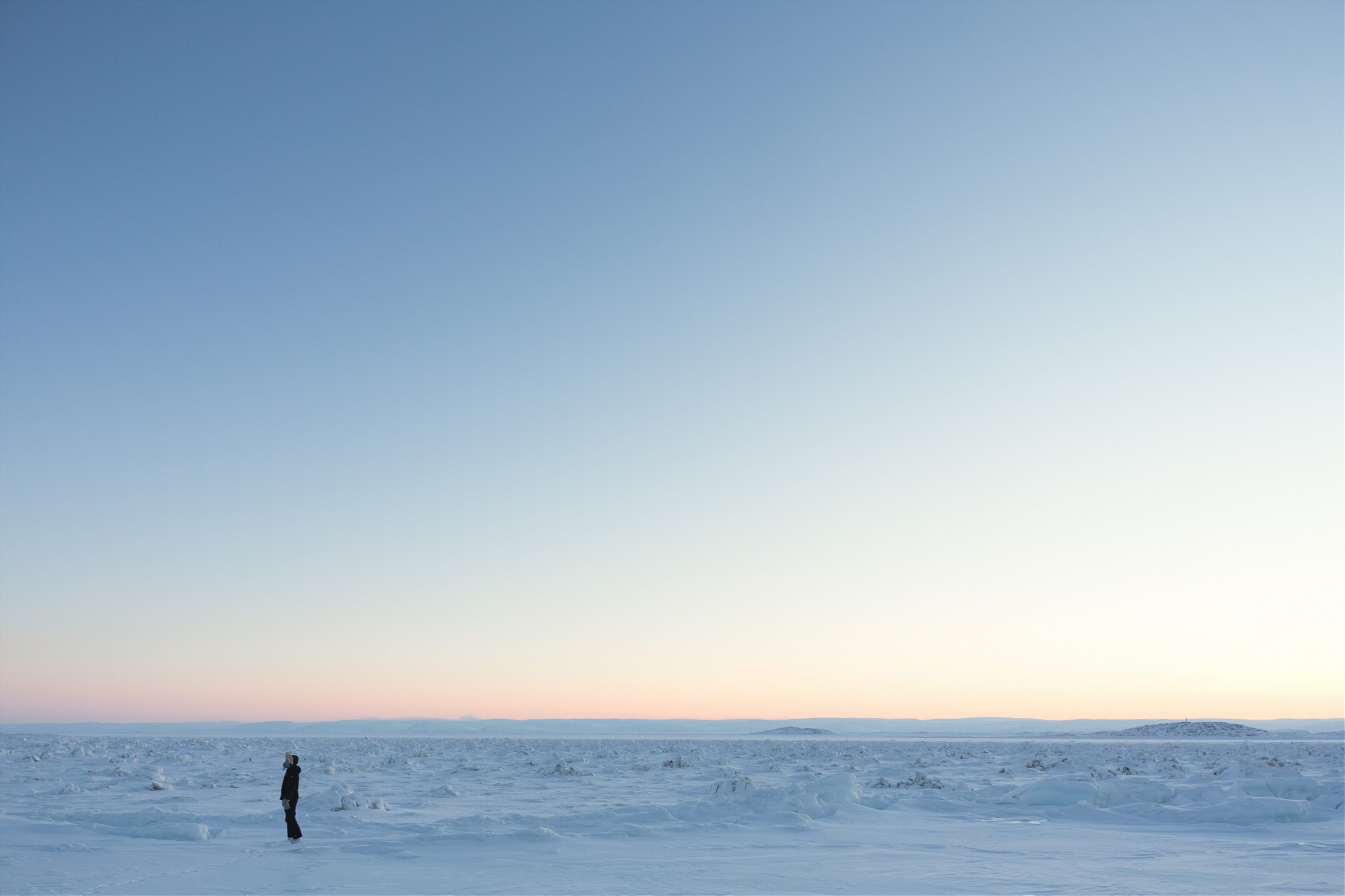A photographer travels to the Canadian Arctic to document one musician’s quest to make ice sing
My phone registered a very quiet sound level of 30 decibels, which was a tad disconcerting as I was standing in the open air, less than 10 meters from Frobisher Bay’s shoreline. The Labrador Sea was completely quiet; the -40ºF temperature had frozen its tidal waves into rough jagged peaks. Behind me stood the long disused remains of the Hudson Bay Company’s outpost, built in 1949 to supply equipment for the military and Cold War intelligence infrastructure based at Iqaluit, the capital of Canada’s Nunavut Territory on Baffin Island.
As a portrait and documentary photographer, I have long been fascinated with capturing isolated environments, and winter in the Canadian Arctic was as far removed as I had ever been from my home base in the southeast of England. It was March and I had arrived on Baffin Island a week earlier to photograph the making of Terje Isungset’s seventh album of ice music.
A master of improvising with natural materials such as wood, stones and metals, Isungset grew up in the mountain town of Geilo, Norway. He started experimenting with ice when he was commissioned to stage a concert under a frozen waterfall in Lillehammer in 1999. As a composer, he had already established himself as one of Europe’s most accomplished and innovative percussionists, releasing solo and collaborative work in Norway’s burgeoning Jazz scene, along the likes of Arve Henriksen, Sidsel Endresen and Anders Jormin.
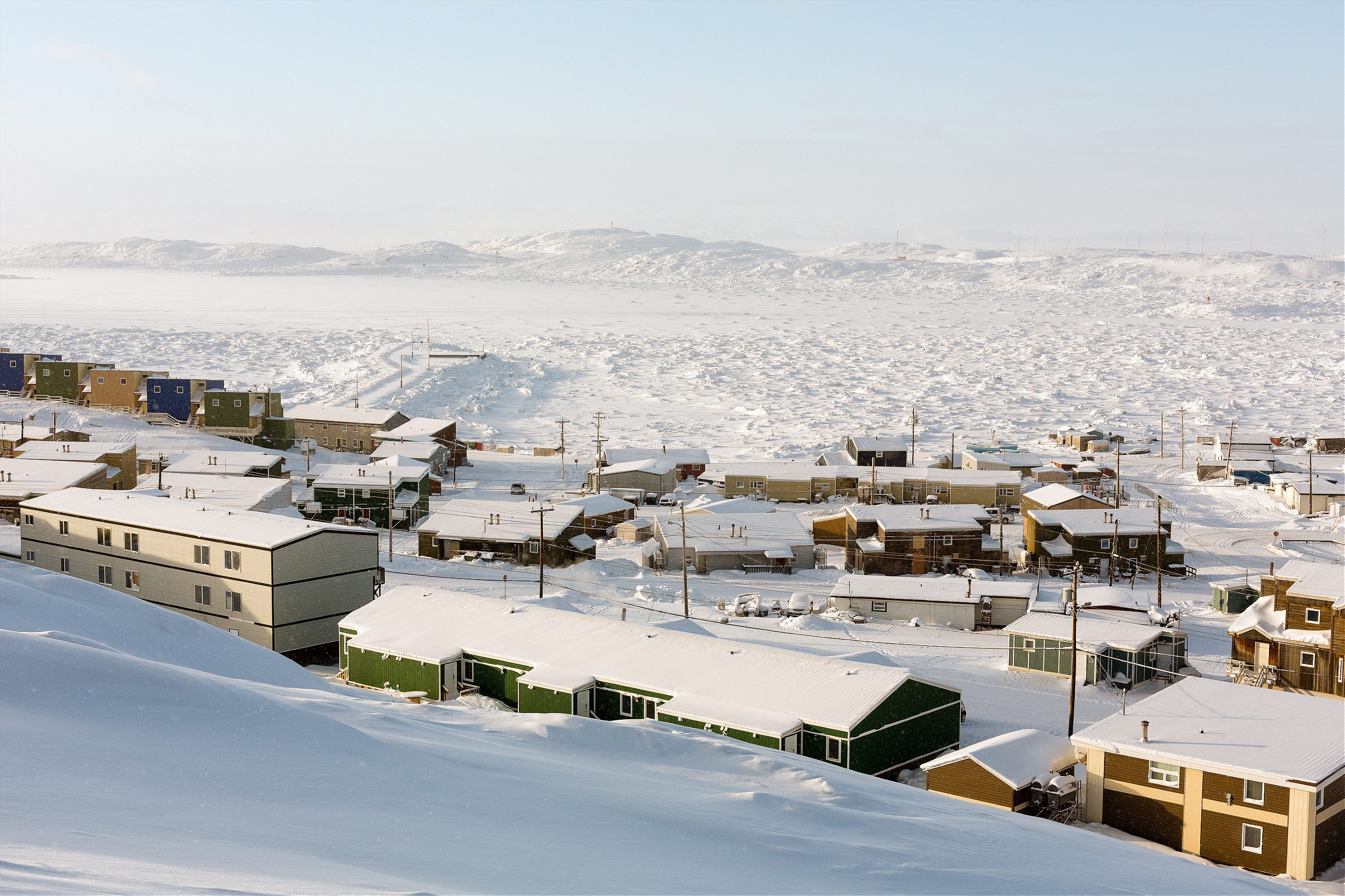
Naturally occurring ice has a surprisingly dynamic range of sound frequencies. Harnessed correctly, its intonation produces incredibly melodic and ethereal music. Strangely though, artificial ice (the type manufactured for ice cubes and hotel buffet swans) is sonically dead, so a labor intensive process of ice extraction from frozen lakes and rivers is the only way to start creating ice music.
Once harvested, the ice is sculpted into a range of instruments, from balafons and cellos to horns and marimbas, all tuned by shaving the ice’s thickness to achieve correct pitch and tone. The next hurdle is to amplify its frequencies. Although wide and varied, the sound waves are exceptionally low in volume, so specific microphones and their placement are critical to achieve a successful recording. Isungset pioneered the whole process and is regarded worldwide as the face of ice music, releasing six albums to critical acclaim. After extensive tours in Japan, Europe, China, Australia and Russia throughout the noughties, he started making plans for an ambitious seventh album. Its concept would highlight the effects of climate change by showcasing recordings made using ice from the frozen areas of all seven continents.
He visited the wilds of Spitsbergen and Siberia, and a glacier high up in the Italian Alps. Back home, the Norwegian Polar Institute supplied Isungset with 100,000-year-old Antarctic ice core samples, which received their musical debut in Tromsø. It was starkly apparent that regionally-sourced ice had its own acoustic signature, and Isungset’s seventh Ice Music album was rapidly becoming an epic adventure. The most arduous and extreme part of the recording process was to be held on Baffin Island, during the coldest part of its winter season, and Isungset invited me along to document the process.
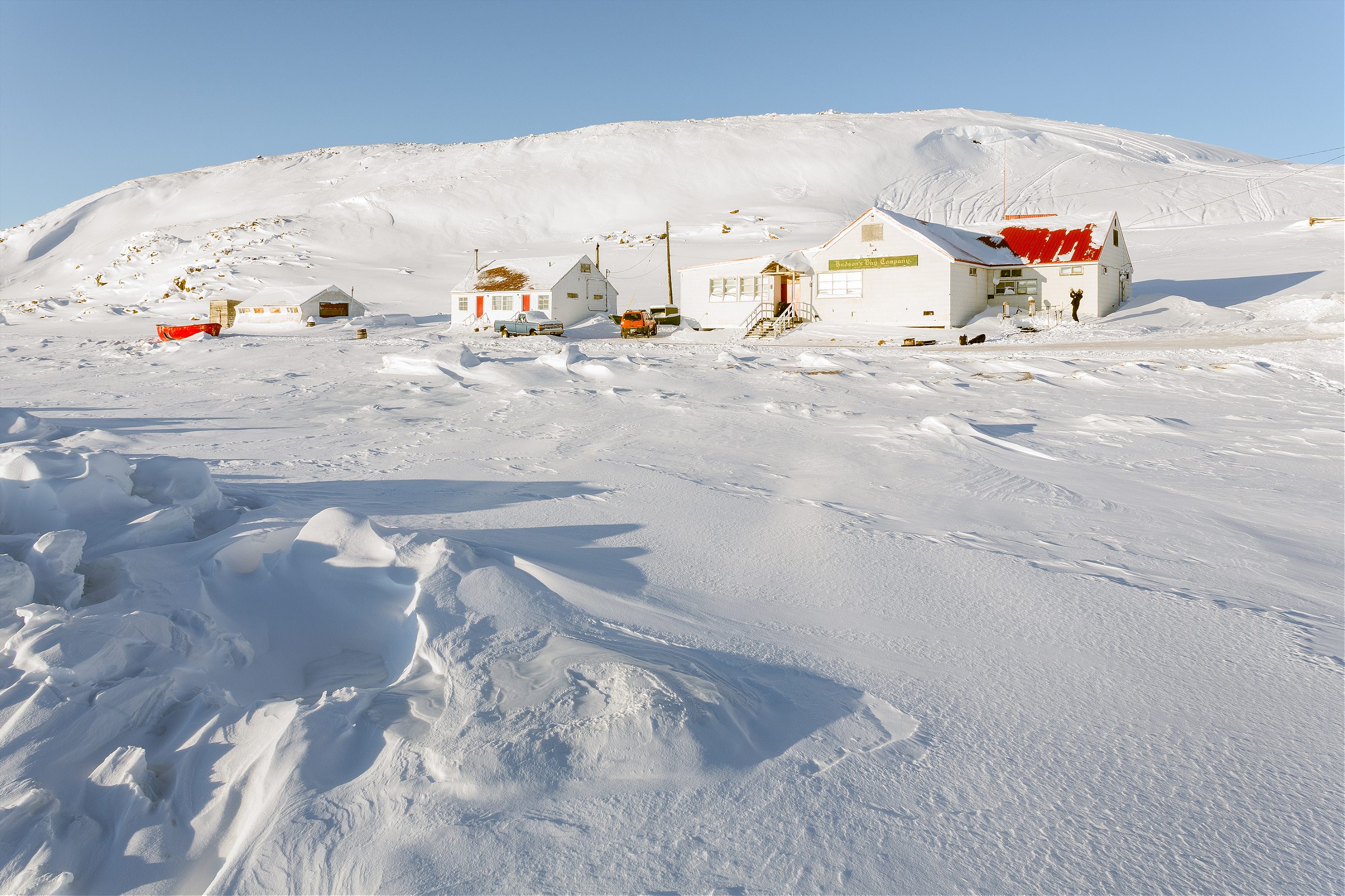
I had been interested in Terje Isungset’s challenging percussive compositions for a while. In 2008 I was assigned to photograph his ice music performance as part of the London Jazz Festival. It lasted just 10 minutes in length, before his instruments melted into a not-so-chilly gig space of central London, but I was transfixed by the madness of making music with ice. Soon after, Isungset invited me to attend his annual Ice Music Festival in Geilo and a longstanding collaborative relationship formed.
Five years later, Isungset had been invited to perform in Nunavut’s only High School, which serves an area equal in land to Mexico and a population of just 32,000 people, spread across 28 communities. He planned to use this opportunity to make a high quality recording of ice music for his seventh album too, and arranged for his experienced Norwegian sound engineer Asle Karstad and master Ice Music Festival instrument sculptor Bill Covitz, from Connecticut, to make the journey with us.
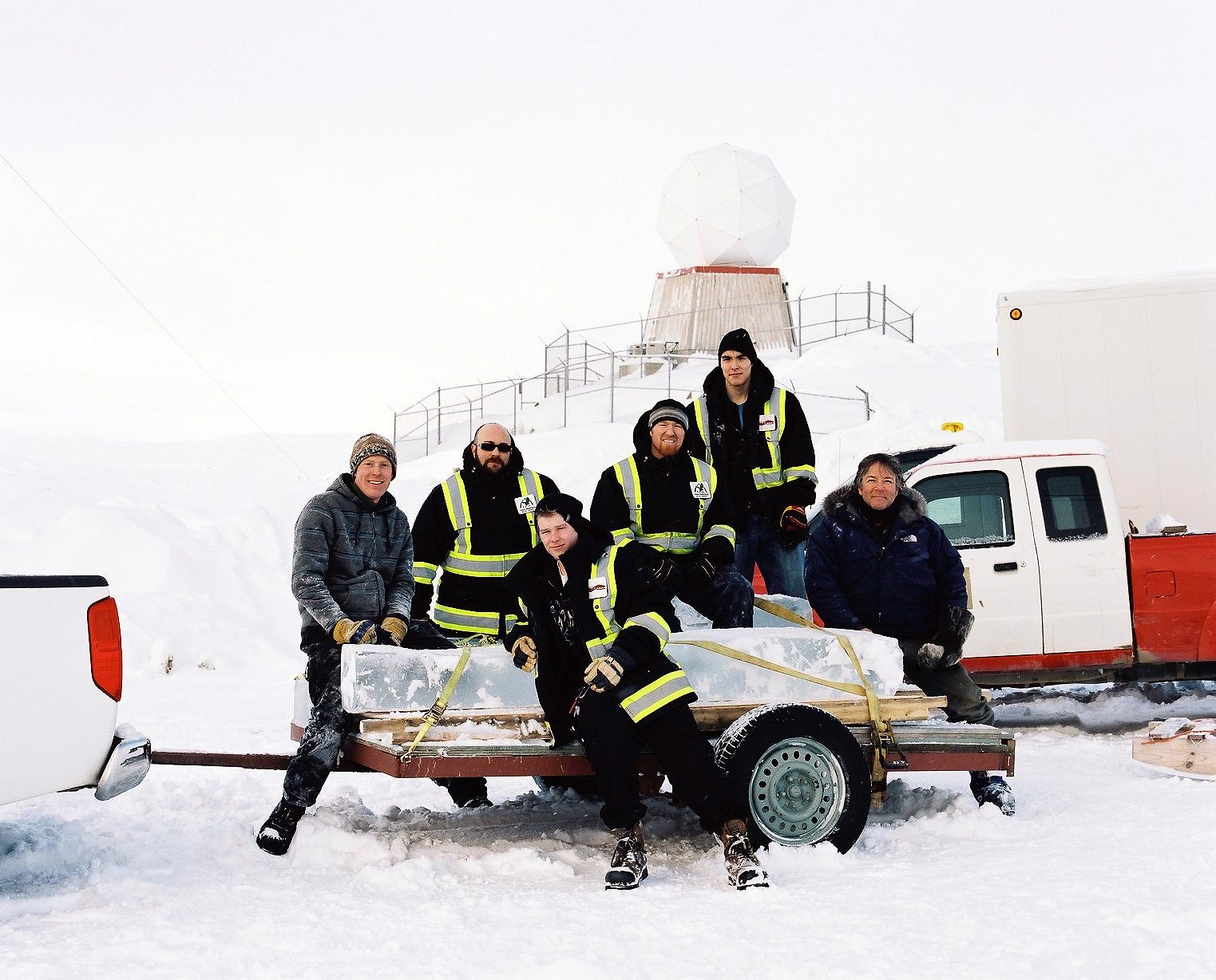
Accessing one of the most remote regions on earth is actually relatively straightforward. I flew alongside a heady mix of scientists, Inuits and contract government workers from Ottawa in the rear of an adapted Boeing 737-200 Combi cargo plane. The city of Iqaluit provides a one-stop shop for anyone involved in scientific high arctic research, polar exploration, and the oil and mineral industries that litter the polar regions.
Formed in 1993, Nunavut is Canada’s newest and largest territory. There are no roads to or from the capital Iqaluit. There are no railways either, only long-range snowmobile trails. Boats gain access inshore for roughly four weeks each summer when the thinner sea ice is broken up. During this brief window, the temperature creeps above 0ºC (32ºF), and Iqaluit receives its annual supply of fuel for the two diesel generators powering the entire town. Shipments of regular household items like toilet paper, TVs, olive oil, and toothpaste are delivered too. Families rent shipping containers packed to order throughout the year at ports on the northeastern coasts of the U.S. and Canada, and they receive the “sea-can” in late July.
Although experienced in photographing harsh climates in central China, North America, Canada and the Nordic Arctic, I was taken back by Baffin Island’s version of cold. The air temperature stayed between -30ºC and -45ºC (-22ºF and -49ºF) throughout my stay, with a couple of days hitting -56C (-69F). The shifts were rapid too. I remember entering my apartment with the sun shining and no wind, only to venture out again an hour later with a 25-degree drop and wind approaching blizzard conditions. At night, the town can close under “cold curfews,” during which fatal exposure is a real risk. Just two days before my arrival, an experienced local hunter perished in the harsh climate. He was found dead at the end of the airport’s runway trying to re-enter town.


Once the successful Inuksuk High School Ice Music Concert was over, thanks to a true community effort, our pursuit for a suitable location for the recording began in earnest. Aside from the bone crushing cold, the main hurdle was seeking somewhere quiet without the ever-present noise pollution of modern living. From vehicles, aircraft, Huskies howling and ubiquitous snowmobile engines revving, Iqaluit’s hubbub was a sound engineer’s nightmare. But with no roads leading away into the silent wilderness and the possibility of severe weather arriving within an hour’s notice, finding a practical solution proved tricky.
That’s how we found ourselves in front of the Hudson Bay Company’s desolate outpost on the shoreline of the tiny settlement of Apex to the east of Iqaluit. The old building proved to be a perfect environment for outside recording, as it offered natural shelter from stray wind and easy access to our 4×4 Chevy, full of recording equipment.
By then I was a week into my stay on Baffin Island, but each landscape still left me breathless. Arctic light is one huge soft box, especially during winter. It wraps around everything in its path and creates the most subtle of shadows. Add in the kaleidoscope of color, with every imaginable hue of red, blue, purple and orange reflecting off the ice and snow under my boots, and you have a photographer’s dream.

With a plentiful supply of both land-locked lake ice and blocks of salty ice carved from the frozen sea, we constructed the outdoor recording studio. The makeshift control room was comprised of two engineers seated in the front of the 4×4, with the audio equipment placed across the rear seats. The engine could not be switched off due to the real possibility of it freezing and more immediately, it provided warmth for the passengers. The tailgate was left open just enough for the microphone cables to slip out and run around the front of the Hudson Bay Company building to Isungset’s ice instruments.
It was agreed that he would try to play for a maximum of 10 minutes each time, which allowed for essential warm-up periods and valuable chances to check there were no errors in the audio capture. Standing around and being inactive in this climate is not to be taken lightly, especially in very dry cold weather, where the extremely low humidity can trick the body into feeling warmer than it actually is. Any exposed skin will suffer from frostbite in about 10 minutes, and considerably less as wind speed increases.
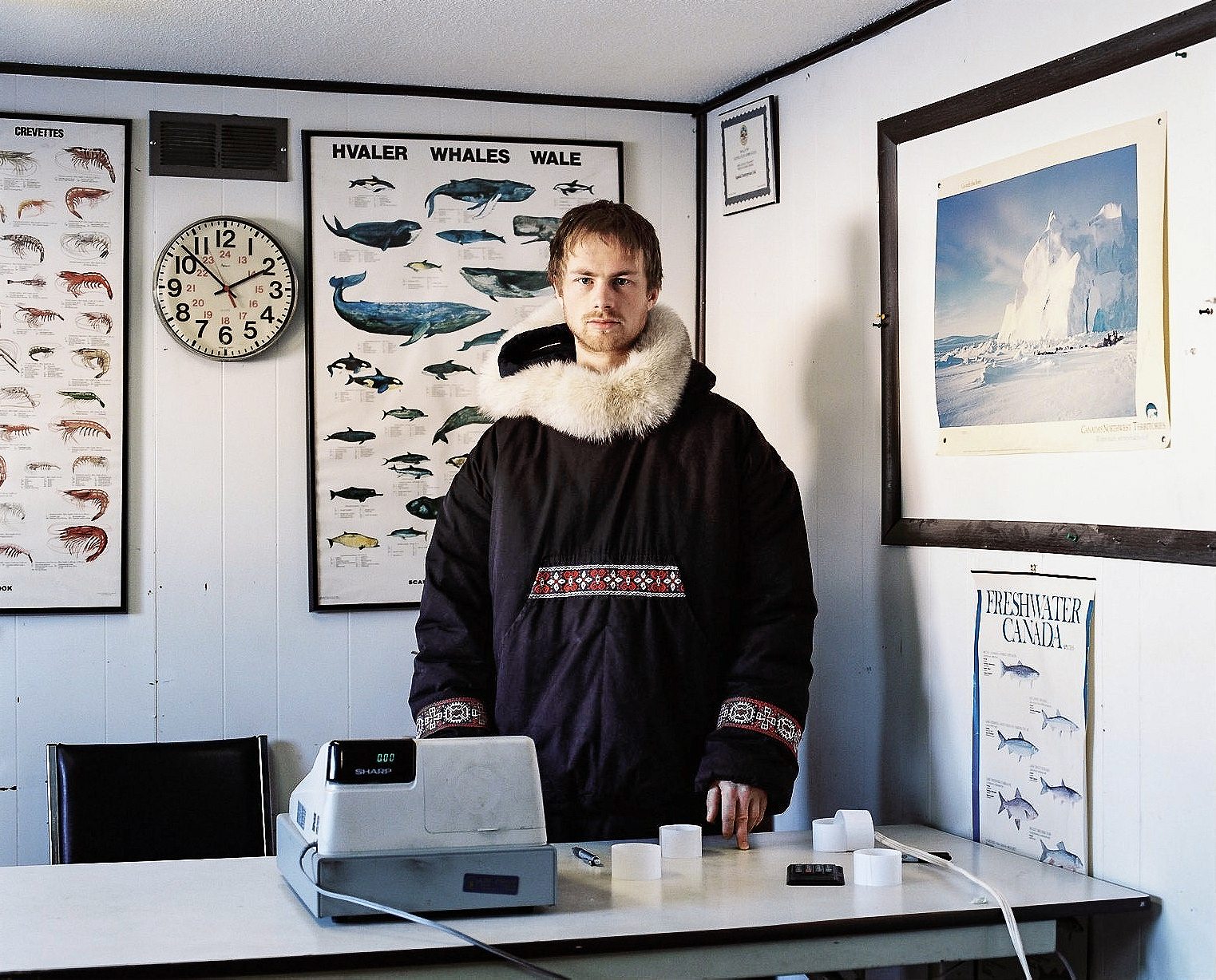
The overall recording took about three hours to complete and by that time, we were all utterly exhausted. Simple things affected the quality of the recording; even far away, I had to stand completely still as the brushing noise of the fabric of my parka could disturb. The low temperatures also affected Isungset’s playing style. He initially broke some of the instruments because of the unexpected fragility of ice. But he was astounded by the range of frequencies they released.
During the very last minutes of recording, we heard a solitary raven screeching back at the sound of Isungset’s large, bassy ice horn. Time seemed to stop. Isungset replied, and eerily, the bird answered. The back and forth lasted for nearly 30 seconds before the raven took off towards the hills behind. Once we had packed the equipment away, Isungset walked off across the sea ice towards the enduring sunset. I stayed ashore. Just as the sun’s orb dropped below the horizon, I fired one last frame for the day. That single image made the cover of Terje Isungset’s seventh ice music album, which he named “Meditations.”
